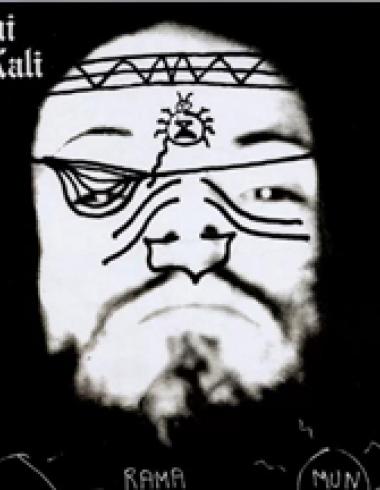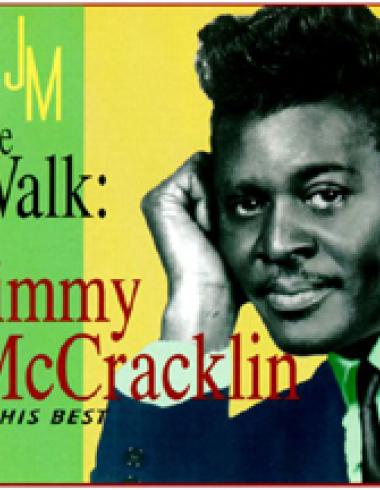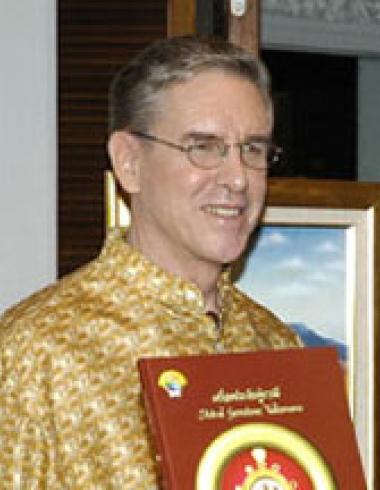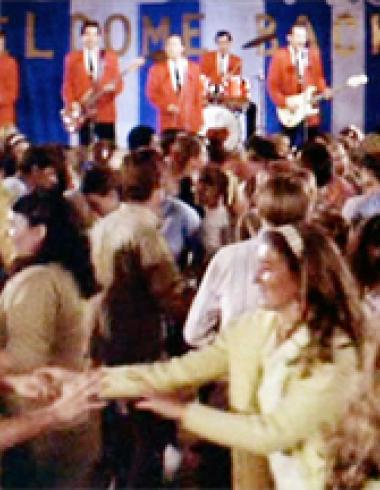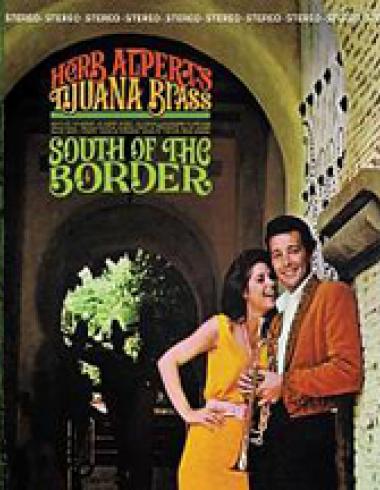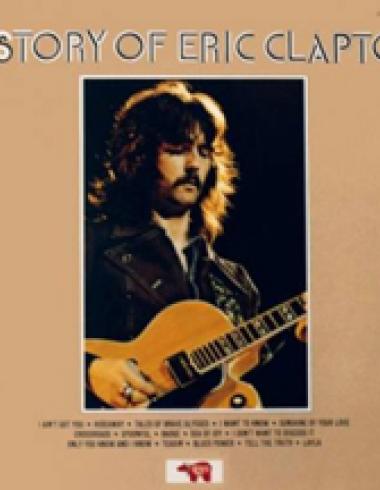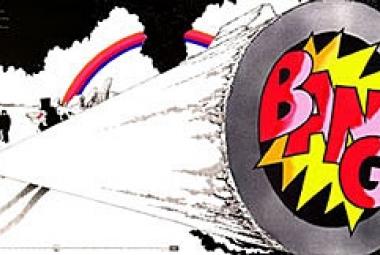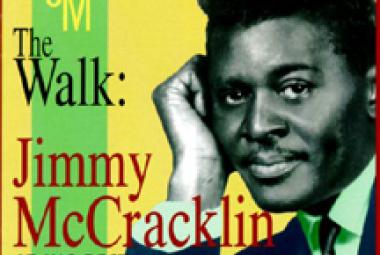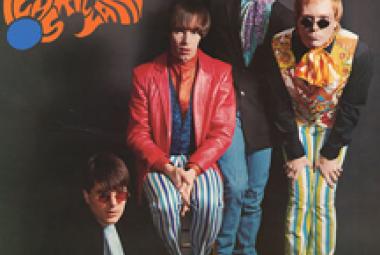David Bowie is a big fan of Fanny; in Wikipedia, he is quoted as saying: “One of the most important female bands in American rock has been buried without a trace. And that is Fanny. They were one of the finest . . . rock bands of their time, in about 1973. They were extraordinary . . . they’re as important as anybody else who’s ever been, ever; it just wasn’t their time.”
(October 2013)
* * *
Big Midnight also has released only one album, Everything for the First Time, which came out on Alive Records in 2003. Allmusic immediately notes in their review by Brian O’Neill, “Actually, there is nothing here that you will be hearing for the first time” and continues: “Everything for the First Time could have as easily came out in 1973 as it did in 2003. Call ’em ‘the Rolling Stooges’ and the band will have to plead guilty, as Big Midnight combines the nihilism of Iggy Pop (‘Love for Sin’ could have been a [David] Bowie or [Lou] Reed side written specifically with Ig in mind) with the bloozey, boozy swagger of Keith Richards’ crew.”
(June 2014)
* * *
Future keyboard superstar Rick Wakeman was in the Strawbs in 1970 and 1971; he had been an active session musician, whose work includes playing mellotron on David Bowie’s first hit single, “Space Oddity” in June 1969.
(July 2014)
* * *
The only song that I know of which (barely) predates “Johnny No” is “Knock on Wood” (written by Eddie Floyd and Steve Cropper) that features the dramatic lyric: “It’s like thunder . . . lightning / The way you love me is frightening”. Otis Redding, David Bowie and Eric Clapton all recorded versions of this song; however, “Knock on Wood” doesn’t sound at all like “Johnny No” to me. (I finally thought to track it down through the songwriting credits; “Johnny No” is based on a 1963 Hoyt Axton song that I did not know called “Thunder N’ Lightnin’” that Jimmy Gilmer and the Fireballs also released as a “B” side).
(May 2015)
* * *
I have never seen any of these local CD’s anywhere except at the place where I bought them. But lesser known and unknown albums accumulate with the hit albums, and record stores offering both new and used albums try to sell them also.
I guess I first learned of this when I would go into a record store and start flipping through the stacks. Many stores have separate sections set up for major artists like the Beatles, the Beach Boys, Pat Benatar, the Band, Black Sabbath, David Bowie, the B-52’s, etc. Then at the end would be a section simply marked “B”; here would be found albums by other artists whose names start with B. Some would be well known – a stray Boston or Blind Faith or Jack Bruce album might be found there, say – but most were utterly unknown to me. I would kind of flip through them, but I rarely bought anything.
Now when I go into a record store that has major artists in their own marked sections, I usually pass those by and go straight to the plain “B”!
(December 2015)
* * *
But before I get into all of that, let me share this appreciation for Prince that was posted by Nick Gillespie on reason.com as part of the best commentary on the PMRC that I have been able to find online. It is quite a bit more barbed than the mainstream accolades that you and I have been reading of late.
“More than Michael Jackson and arguably even more than Madonna — to name two other ’80s icons who challenged all forms of social convention in a pop-music setting — Prince took us all to a strange new place that was better than the one we came from. (In this, his legacy recalls that of David Bowie.)”
(June 2016)
* * *
(September 2016)
* * *
Stephen Thomas Erlewine gives the band their due in his write-up for Allmusic: “The New York Dolls created punk rock before there was a term for it. Building on the Rolling Stones’ dirty rock & roll, Mick Jagger’s androgyny, girl group pop, the Stooges’ anarchic noise, and the glam rock of David Bowie and T. Rex, the New York Dolls created a new form of hard rock that presaged both punk rock and heavy metal. Their drug-fueled, shambolic performances influenced a generation of musicians in New York and London, who all went on to form punk bands. And although they self-destructed quickly, the band’s first two albums remain among the most popular cult records in rock & roll history.”
* * *
Continuing in the Allmusic article, Stephen Thomas Erlewine talks about the genesis of the Stooges’ third album: “Early in 1972, [Iggy] Pop happened to run into David Bowie, then at the height of his Ziggy Stardust popularity and an avowed Stooges fan. Bowie made it his mission to resuscitate Iggy & the Stooges, as the band was then billed. Iggy and [James] Williamson were signed to a management deal with MainMan, the firm guiding Bowie’s career, and the new edition of the band scored a deal with Columbia Records. Temporarily based in London and unable to find a suitable rhythm section in the U.K., Iggy and Williamson invited the Asheton brothers to join the new group, with Scott [Asheton] on drums and Ron [Asheton] moved to bass. Iggy produced the third Stooges album, Raw Power, and Bowie handled the mix. Released in 1973 to surprisingly strong reviews, Raw Power had a weird, thin sound due to various technical problems . . . [with] many Stooges purists blam[ing] Bowie for the brittle mix.”
* * *
By the time Kill City was finally released, Iggy Pop had already collaborated with David Bowie on two solo albums, The Idiot and Lust for Life. The title track of the latter album, “Lust for Life” was used as the theme song for Royal Caribbean Cruise Lines for several years, beginning not long after Peggy and I had our honeymoon on one of their ships.
(December 2016)
* * *
* * *
Against the odds,
Iggy Pop turns 70 next month, and his music is as vital as ever. His most recent album,
Post Pop Depression (
2016), ranks 4 stars from
Allmusic;
Mark Deming writes: “When it was announced that
Iggy Pop would be collaborating with
Josh Homme of
Queens of the Stone Age, the music press buzzed with anticipation about the project. What would the
proto-punk icon and the snarky
hard rock smart guy come up with? The surprise answer is
2016’s
Post Pop Depression,
in many respects an unwitting but loving tribute to Pop’s friend and collaborator David Bowie. Post Pop Depression arrived two months after Bowie’s death, and was completed before his health problems became common knowledge. More than anything, though, this music evokes the sound and feel of Pop’s first two solo albums. 1977’s The Idiot and Lust for Life were cut with Bowie in Germany as Pop struggled to make sense of his life and career after the Stooges collapsed. With the reunited Stooges gone following the deaths of Ron [Asheton] and Scott Asheton, Post Pop Depression finds Pop returning to the work he made in 1977, in ways that count the most. Post Pop Depression is smart and thoughtful, intelligent without being pretentious, and full of bold but introspective thinking.”
(March 2017)
* * *
(June 2017)
* * *
Several more editions of Raw Power have been released more recently, however – most famously, an alternate mix of Raw Power supervised by Iggy Pop in 1996 came out in April 1997, in response to the frequent complaints about David Bowie’s mix that was used in the original 1973 release. Iggy felt pressured to participate; he figured that if he blew them off, the record company would put out a remixed album anyway, and who knows what it would sound like.
I have purchased recent vinyl pressings of the other two Stooges albums, but not Raw Power; and my copy of that record has not yet surfaced among the hundreds of albums that I have cleaned up from Hurricane Katrina. There was, however, a limited vinyl edition of Raw Power that came out on Record Store Day 2012 that featured one disc with the original release of Raw Power using David Bowie’s 1973 mix, and another with Iggy Pop’s 1996 remix of Raw Power, along with a 16-page commemorative booklet. I’m keeping my eyes open.
* * *
Ultimately, a revised edition of Let it Be came out in 2003, due to the hostility by many to Phil Spector’s production efforts on the original album. It was called Let it Be . . . Naked and purportedly stripped the additions and corrections made by Spector to the original Beatles recordings. As with the Iggy Pop remix of the Stooges album Raw Power, however, successfully redoing an album that has been heard for many years by basically everyone having any interest at all in the music is easier said than done. Mark Deming notes in Allmusic: “In 1997, when Columbia made plans to issue a new edition of Raw Power, they brought in [Iggy] Pop to remix the original tapes and (at least in theory) give us the ‘real’ version we’d been denied all these years. Then the world heard Pop’s painfully harsh and distorted version of Raw Power, and suddenly [David] Bowie’s tamer but more dynamic mix didn’t sound so bad, after all.”
(September 2017)
* * *
As I might have mentioned already, the album that became
Raw Power started off as a collaboration between
Iggy Pop and James Williamson also.
Iggy Pop had been signed with
MainMan Management, the company that handled
David Bowie. They were recording in
England, and after many auditions for a rhythm section,
James Williamson suggested that the
Asheton brothers be flown over from the
U.S.;
Scott Asheton sat in on drums, while
the Stooges’ founding guitarist
Ron Asheton reluctantly agreed to become the bass guitarist. Only at that point did it truly start to become a
Stooges album.
* * *
The liner notes on the back tray card have this description: “
Raw Power. The brutal third album that closed
the Stooges’ career and fueled the beginnings of
punk rock. A true milestone. But . . . it was not the album
the Stooges wanted you to hear.
“Although toned down from still more murderous demos (see
I Got a Right, BMP 12139 [the 12” single version]), the album delivered by
the Stooges put fear in the hearts of record execs, who in turn put
David Bowie in the studio to redo the whole thing. The results, while great, were a far cry from what
Raw Power started out to be.”
The back tray card also says, “Guaranteed
Bowie-free!!” and includes a small photo of
David Bowie in a red circle with a line through it. However, the point of
Rough Power is not to trash the work that
Bowie did on
Raw Power but to provide an alternative presentation of the classic album. After all, had
David Bowie not personally intervened to revive
the Stooges, all we would have are the first two albums;
Raw Power and virtually all of the music in
The Iguana Chronicles would not exist at all.
In a long essay in the booklet for
Rough Power that includes an interview with guitarist/bassist
Ron Asheton,
Frank Meyer says of
David Bowie’s involvement: “Finally . . .
Iggy brought the tapes to
[David] Bowie in
L.A. for remixing and mastering.
Bowie’s mix turned out to be very different than the original
Stooges mix. He buried the drums and bass, took out backup vocals, percussion and keyboard parts, and brought the lead guitar up in the mix. While the band was not happy with it,
CBS [Records] was thrilled that [
Raw Power] was produced by Ziggy Stardust himself, and felt it would boost sales. Although Bowie’s mix stands the test of time and, in fact, adds to the overall originality of the album, it’s very interesting to hear some of the Stooges’ original attempts.”
* * *
I also found a quote from
Iggy Pop in the
Wikipedia article that was taken from the liner notes of the new mix of
Raw Power that was released in
1997: “Very few people recognized the quality of
the Stooges’ songwriting, it was really meticulous. And to his credit, the only person I’d ever known of in print to notice it, among my peers of professional musicians, was
[David] Bowie. He noticed it right off.”
* * *
(December 2017)




